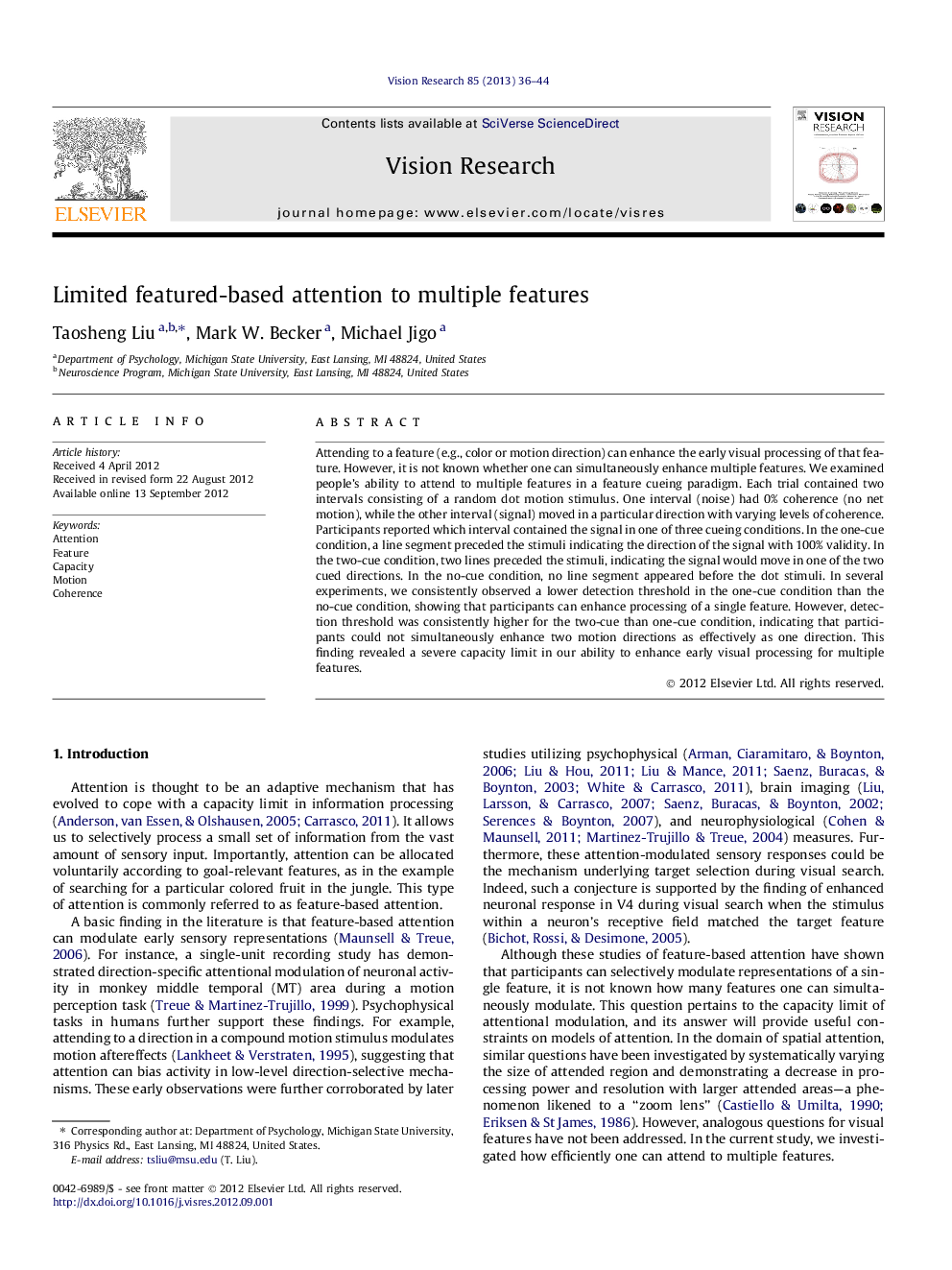| Article ID | Journal | Published Year | Pages | File Type |
|---|---|---|---|---|
| 4033785 | Vision Research | 2013 | 9 Pages |
Attending to a feature (e.g., color or motion direction) can enhance the early visual processing of that feature. However, it is not known whether one can simultaneously enhance multiple features. We examined people’s ability to attend to multiple features in a feature cueing paradigm. Each trial contained two intervals consisting of a random dot motion stimulus. One interval (noise) had 0% coherence (no net motion), while the other interval (signal) moved in a particular direction with varying levels of coherence. Participants reported which interval contained the signal in one of three cueing conditions. In the one-cue condition, a line segment preceded the stimuli indicating the direction of the signal with 100% validity. In the two-cue condition, two lines preceded the stimuli, indicating the signal would move in one of the two cued directions. In the no-cue condition, no line segment appeared before the dot stimuli. In several experiments, we consistently observed a lower detection threshold in the one-cue condition than the no-cue condition, showing that participants can enhance processing of a single feature. However, detection threshold was consistently higher for the two-cue than one-cue condition, indicating that participants could not simultaneously enhance two motion directions as effectively as one direction. This finding revealed a severe capacity limit in our ability to enhance early visual processing for multiple features.
• Feature-based attention can modulate early visual responses. • We measured motion coherence thresholds while manipulating attention to directions. • We found higher thresholds when attending to two directions than one direction. • Results show that it is not possible to enhance two directions as well as one.
